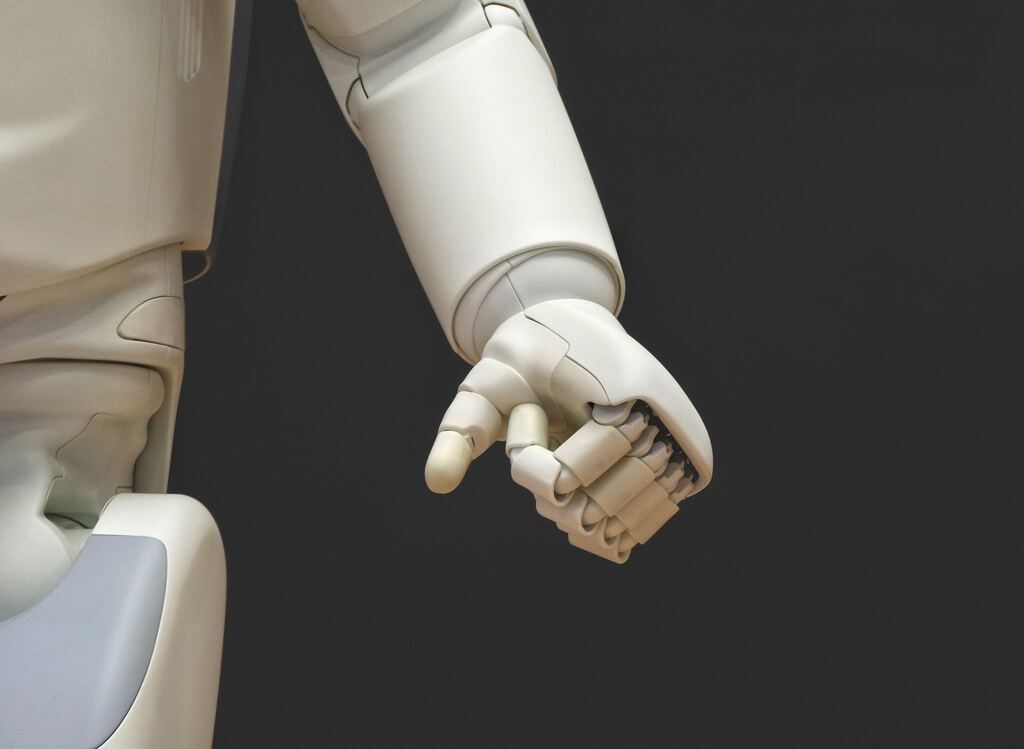Exoskeletons: communication is needed

They instantly make you think of robots: mechanical suits that support the human body and make the supposedly impossible possible. We are talking about exoskeletons. What has long been merely part of science fiction films and action games has become reality. We explain the opportunities offered by technology and where it still reaches its limits today. Find out what the latest findings are and in which areas exoskeletons are already used.
Exoskeletons are mechanical suits that support or reinforce the movements of its wearer. The spectrum ranges from relief during physically strenuous movements to paralysed people being able to walk again with the help of this technology. Mechanical orthoses are currently mainly used in medicine, the military and industry. But if you read the headlines about exoskeletons, you could almost assume that they will soon replace wheelchairs.
Diverse fields of application
The fact that this does not quite correspond to reality was demonstrated on the podium of Swiss Engineering Region Zürich Plus at the University of Applied Sciences Rapperswil (HSR). Marla Eva Moser moderated the event, which was dedicated to the current state of exoskeletons in various application areas. The guests were Sylvia Rohner, technical project manager of the HSR cybathlon project, Olga Motovilova, co-founder of the ETH spin-off Noonee, and Dr. Michael Baumberger, chief physician for paraplegiology at the Swiss Paraplegic Centre (SPZ). The following prospects and points of view were outlined by the experts for the respective area:
Sport: Using exoskeletons instead of wheelchairs for athletic purposes, as is the case with Cybathlon (more about this project here), is still an ambitious project. Above all, the high weight of the suits makes it difficult to find suitable athletes.
Industry: The first devices are already being mass-produced and used in mechanical professions. With the help of an exoskeleton, mechanics can work ergonomically and thus relieve the body. Since leg orthoses cannot currently be used on steps, however, they are not yet used in all areas.
Medicine: Even though exoskeletons are already used for therapeutic purposes, they are not yet practicable enough to offer an advantage over conventional methods. For many paralysed people, walking is not the highest priority. Much more important are other functions such as continence, which is why research tends to focus there.

In general, three points can be summarized:
- Exoskeletons are already being used today and successes are becoming apparent. Except in industrial production, where they are already increasingly being used today, the skeletons are not yet practicable enough.
- Above all, they are too heavy - putting them on involves a lot of effort - and too expensive.
- In order to achieve long-term success, we need an increased awareness of opportunities and challenges and interdisciplinary cooperation.
Working together for greater visibility
Especially the last point clarifies that communication is key. Precisely because this is an interdisciplinary field of research and application, consistent messages are important. Internal communication requires as much consistency as external communication. When researchers, entrepreneurs, physicians and sportsmen and sportswomen work together, they can draw a sustainable picture of exoskeletons. A picture that gets away from exuberant headlines and Science Fiction. An image that includes innovation and the need for more research.
We will continue to follow the development of exoskeletons with interest. Because where technology meets entrepreneurship, we are in our element. We are delighted to have been able to guide you through this event, are looking forward to the future of exoskeletons with excitement and are ready to develop and implement the necessary communication measures.